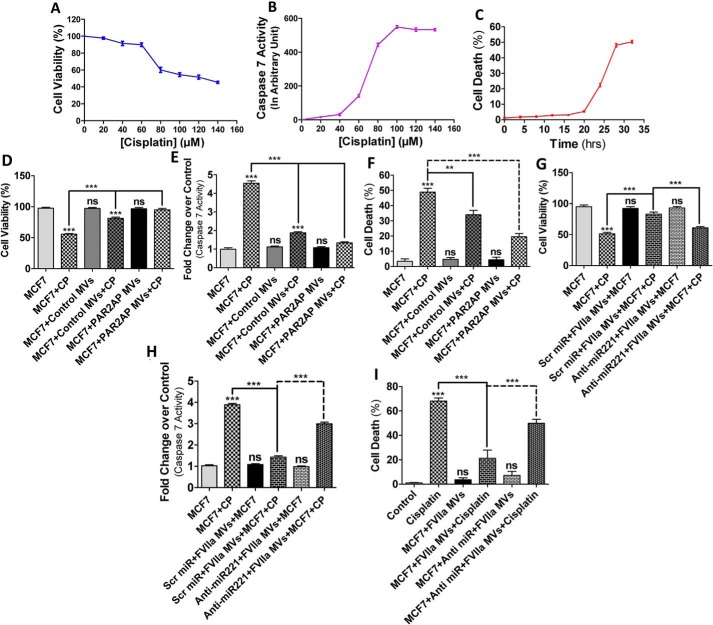Figure 4.
MDAMB231 cell-derived MV confer resistance against cisplatin-induced apoptosis of MCF7. A, MCF7 cells were exposed to various concentrations of cisplatin for 30 h and cell death was monitored by the MTT assay and the IC50 of cisplatin on MCF7 was shown to be 100 μm. B, the degree of apoptosis induced by various concentrations of cisplatin was also measured by a caspase 7 activity assay, which also indicates that maximum caspase 7 activity was monitored at 100 μm cisplatin. C, MCF7 cells were exposed to cisplatin (100 μm) for various time points and apoptosis was monitored by a FACS analyzer as mentioned briefly under “Experimental procedures,” which indicates that maximum cell death was observed at ∼30 h of cisplatin exposure. D–F, MDAMB231 cell-derived MV (both control, as well as PAR2AP-treated) were fused with MCF7 cells followed by the addition of cisplatin (100 μm). Cell viability, caspase 7 activity, and the degree of apoptosis by FACS were measured thereafter, which demonstrates that MDAMB231-MV rescued MCF7 cells from cisplatin-induced apoptosis. G–I, MDAMB231 cells were pre-transfected with anti-miR221 followed by FVIIa addition and MV isolated were introduced into MCF7 cells. The recipient MCF7 cell death was monitored upon challenging the cells with cisplatin and the data indicates that anti-miR221 introduction diminished the anti-apoptotic effect of MDAMB231-MV on MCF7.

